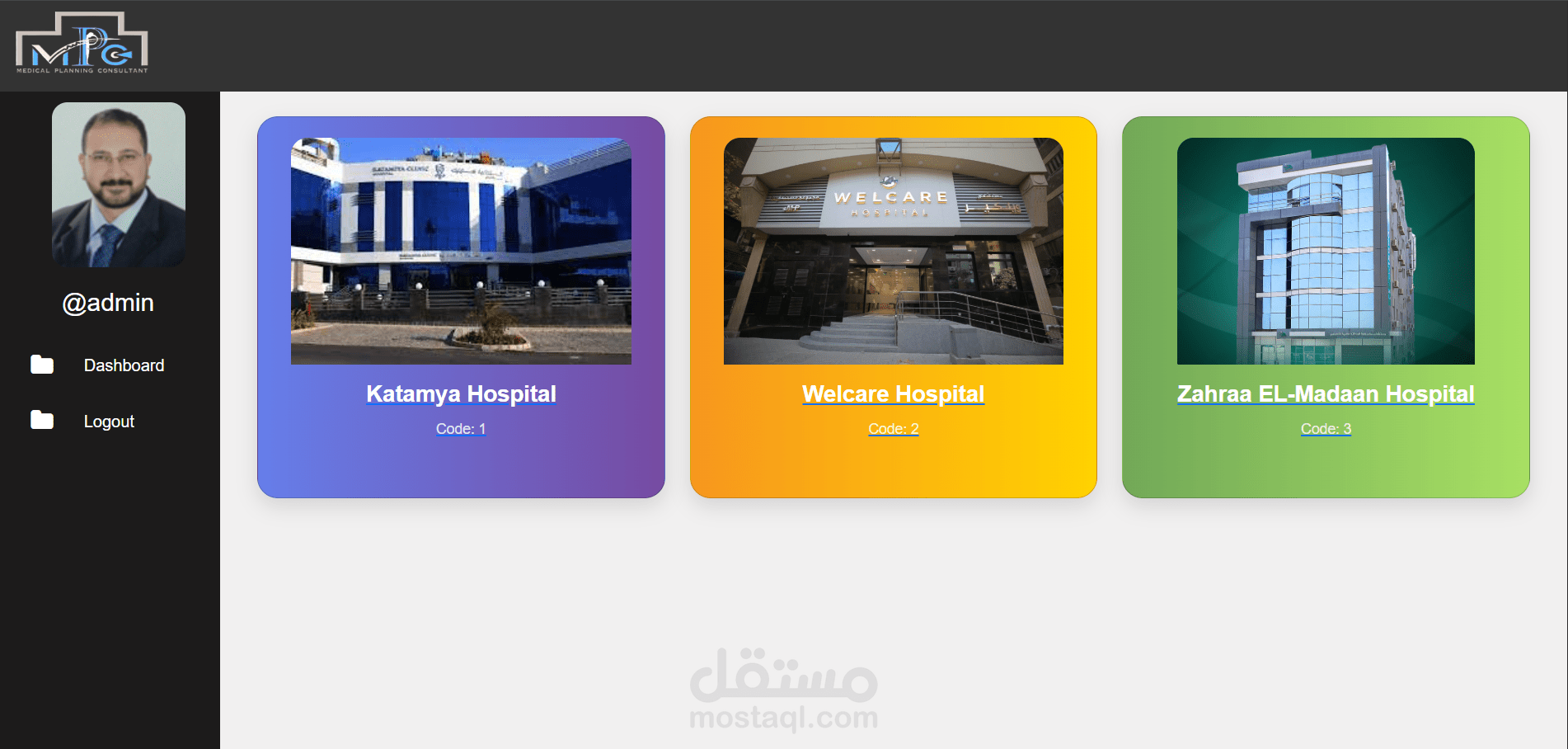web developer
تفاصيل العمل
1.Database Design & Implementation
oCreated and managed relational databases using MySQL.
oDesigned relationships between hospital, devices, users, manufacturers, invoices, and calibration tables.
oUploaded and maintained the database using phpMyAdmin.
oUsed XAMPP as the local development environment to run Apache server and MySQL database.
o
2.Website Development
oDeveloped core functionalities of the hospital management system using PHP.
oImplemented user authentication login(Admin or user).
oCreated modules for hospitals, devices, manufacturers, users, work orders, invoices, and calibration.
oDesigned dynamic queries to fetch, insert, update, and delete data from the database.
3.System Deployment
oTested the hospital management website locally on XAMPP.
oLinked it with the live domain hospitals.mpc-egy.com for demonstration.
oEnsured smooth interaction between front-end (PHP) and backend (MySQL database).
Database & System Flow
A core part of my training was working with the hospital database system, which I implemented and managed using phpMyAdmin.
The ER Diagram below represents the structure of the database I worked on:
Key Entities in the Database:
•Hospitals → stores hospital information (code, name, location).
•Users → manages login credentials and roles (admin/employee).
•Devices → tracks hospital devices, warranty, installation, and assigned users.
•Workorders → stores repair and maintenance records for devices.
•Manufacturers & Companies → supplier details for medical equipment.
•Invoices & Purchasing Orders → financial management of hospital supplies.
•Calibration → records calibration data of medical devices.
•Spare Parts Used → tracks spare parts linked to work orders.
This system ensures efficient hospital workflow, allowing hospitals to:
•Register devices.
•Track maintenance schedules.
•Manage spare parts and suppliers.
•Handle calibration records.
